What Technologies and Fabrics Are Used in Mass Customization of Men’s Sweaters? Ainear Shares the Pros and Cons
In the dynamic landscape of the fashion industry, mass customization has become a pivotal strategy for addressing diverse customer demands while preserving production efficiency. This approach is particularly significant in the production of men’s sweaters, where style, comfort, and quality are paramount. As a leading mens sweaters factory, Ainear leverages advanced technologies and an in-depth understanding of fabrics to deliver exceptional customized products to business-to-business (B2B) clients.
Mass customization enables businesses to order sweaters tailored to specific requirements, encompassing unique designs, color schemes, or fabric compositions. This flexibility is achieved through the integration of innovative technologies, ranging from computer-controlled knitting machines to sophisticated dyeing techniques such as Chinese tie-dye. This article provides a comprehensive exploration of the technologies and fabrics utilized in the mass customization of men’s sweaters, with a particular emphasis on the history, industrial application, and aesthetic effects of Chinese tie-dye. Additionally, it evaluates the advantages and disadvantages of these technologies and fabrics to assist B2B clients in making informed decisions.
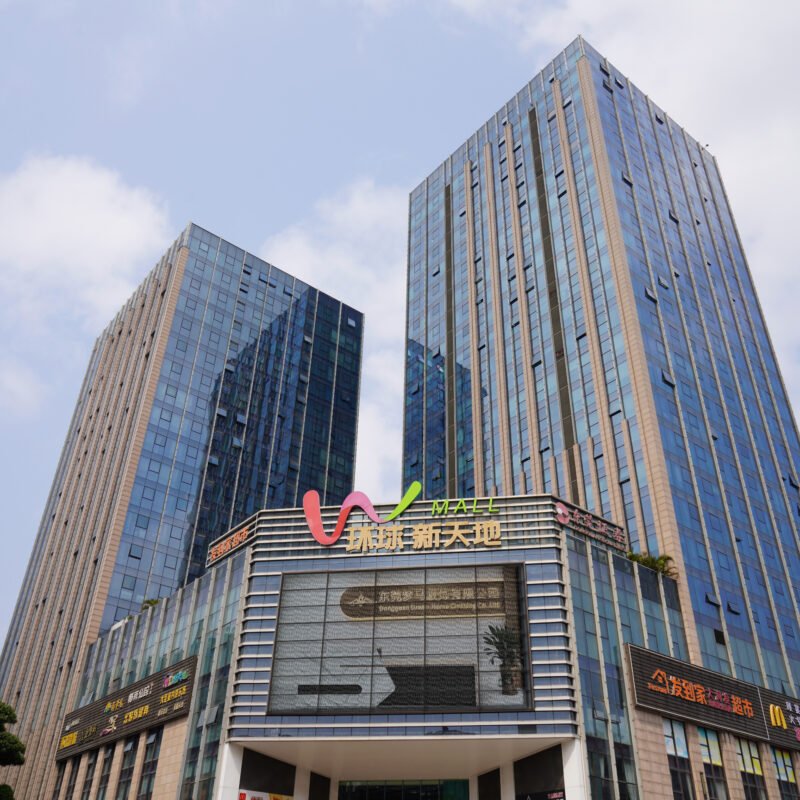
Understanding Mass Customization
Mass customization is a production methodology that combines the benefits of mass production with the personalization of custom-made products. It facilitates the creation of sweaters that cater to individual client preferences in design, fit, and material while maintaining cost-effectiveness. This approach is particularly advantageous for B2B clients, including retailers, wholesalers, and brands, who seek to differentiate their offerings in competitive markets.
The benefits of mass customization for B2B clients include:
- Distinctive Products: Unique designs and features that enhance market differentiation.
- Brand Alignment: Products that reflect the brand’s identity and values.
- Efficient Inventory Management: Production based on demand, minimizing excess stock and waste.
- Enhanced Customer Satisfaction: High-quality, tailored products that meet specific client expectations.
Ainear has developed over 300 sweater styles, each customizable in terms of fabric, color, and pattern, enabling clients to create exclusive collections. To explore our offerings, visit our product page.
Technologies in Mass Customization of Men’s Sweaters
The customization of men’s sweaters relies on a suite of advanced technologies that ensure precision, flexibility, and efficiency in production. The following are key technologies employed in the industry:
- Computer-Controlled Knitting Machines
- Digital Printing
- Dyeing Techniques
- 3D Knitting
- Automated Cutting and Sewing
- Supply Chain Management Software
These machines are integral to producing intricate patterns and designs with high precision. Programmable to switch between styles and sizes, they are ideal for customized production runs. Modern knitting machines, such as those from Shima Seiki, facilitate seamless design transitions, reducing production time and material waste (How Sweaters Are Made).
Digital printing technology allows for the direct application of complex designs onto fabrics or finished garments. This method is particularly effective for small batch sizes, enabling rapid design changes without extensive setup. It also promotes sustainability by reducing water and chemical usage compared to traditional printing methods.
Dyeing is a critical process in sweater production, with techniques like Chinese tie-dye creating unique visual effects. This traditional method, explored in detail later, involves tying fabric to resist dye, producing distinctive patterns.
Also known as whole garment knitting, 3D knitting produces seamless sweaters in a single piece, minimizing waste and enhancing fit. This technology supports high levels of customization in shape and size, making it ideal for complex designs (3-D Knitting).
Automation ensures consistency and speed in cutting and sewing, essential for fulfilling large orders with customized elements. Automated systems handle diverse fabrics and designs with precision, reducing errors and enhancing efficiency.
Advanced software streamlines the management of customized orders, tracking specifications, coordinating production schedules, and ensuring timely delivery. These tools enhance operational efficiency and client satisfaction.
By integrating these technologies, Ainear delivers high-quality customized sweaters with efficiency and precision. As a trusted mens sweaters supplier, we are committed to meeting the diverse needs of our B2B clients.
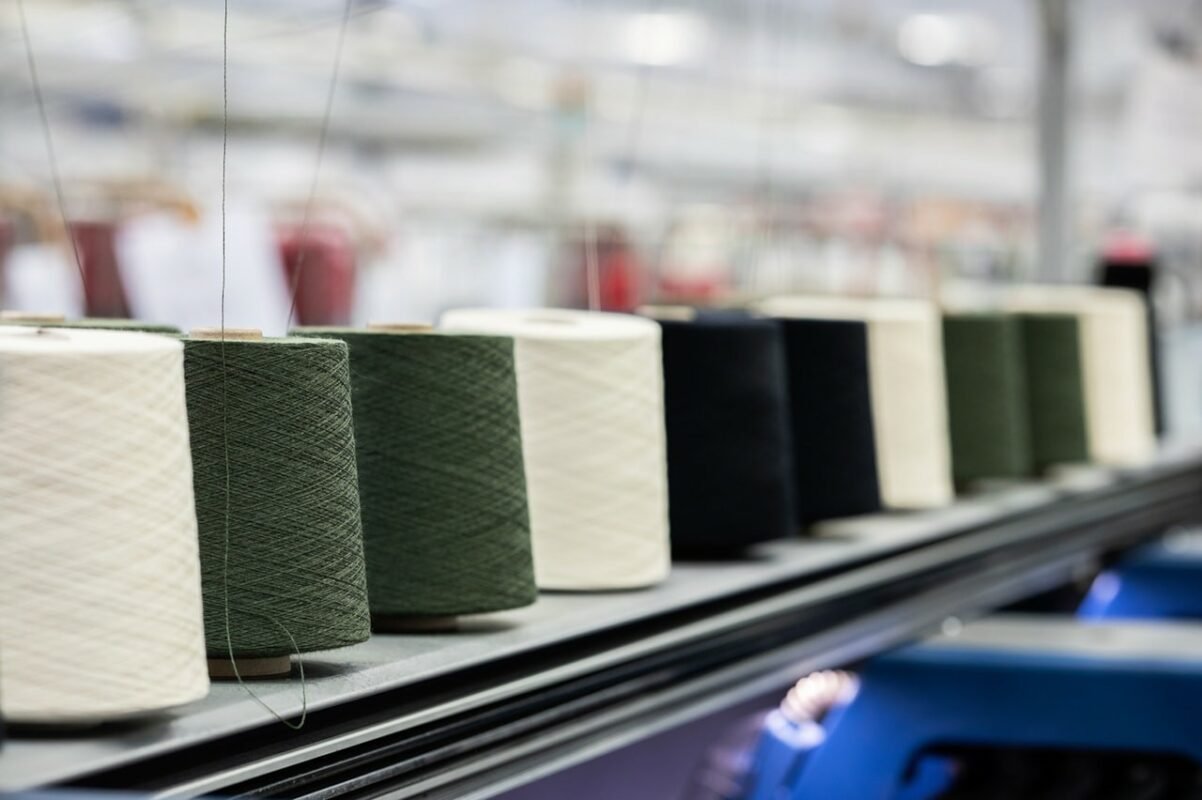
Fabrics Commonly Used in Men’s Sweaters
The selection of fabric is a critical factor in determining a sweater’s quality, comfort, and aesthetic appeal. The following sections detail the most commonly used fabrics in men’s sweaters, along with their advantages and disadvantages.
Wool
Wool, a natural fiber, is renowned for its warmth and durability. Various types of wool offer distinct properties:
- Merino Wool: Fine and soft, suitable for next-to-skin wear.
- Shetland Wool: Coarser and robust, ideal for outerwear.
- Lambswool: Derived from a lamb’s first shearing, soft and lightweight.
Advantages:
- Superior insulation properties.
- Moisture-wicking capabilities.
- Natural elasticity for shape retention.
- Biodegradable and sustainable.
Disadvantages:
- Potential for itchiness in coarser varieties.
- Requires careful washing to prevent shrinkage.
- Higher cost compared to synthetic alternatives.
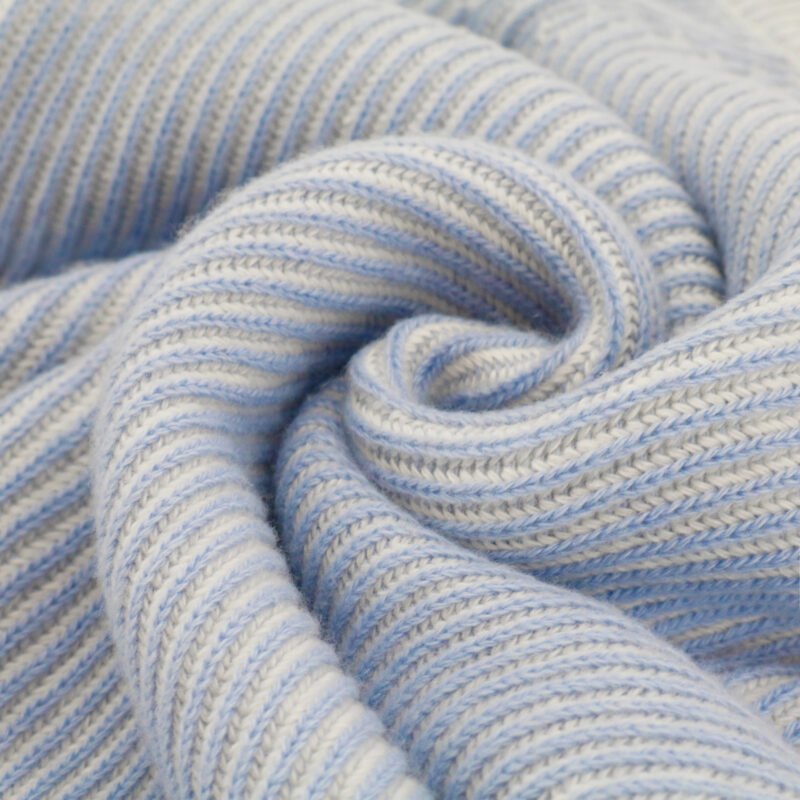
Cashmere
Cashmere, sourced from cashmere goats, is a luxurious fiber valued for its softness and warmth, primarily produced in regions like Mongolia and China.
Advantages:
- Exceptional softness and comfort.
- Lightweight with excellent insulation.
- Superior draping qualities.
Disadvantages:
- High cost due to limited supply.
- Delicate fibers necessitating hand washing or dry cleaning.
- Susceptibility to pilling over time.
Cotton
Cotton is a versatile fabric used in lighter-weight sweaters, with varieties such as Pima and Egyptian cotton offering enhanced quality.
Advantages:
- Breathable and comfortable for all-day wear.
- Easy to care for, typically machine washable.
- Cost-effective compared to wool or cashmere.
Disadvantages:
- Lower insulation compared to wool.
- Potential for shrinkage if not pre-treated.
- May lose shape with extended wear.
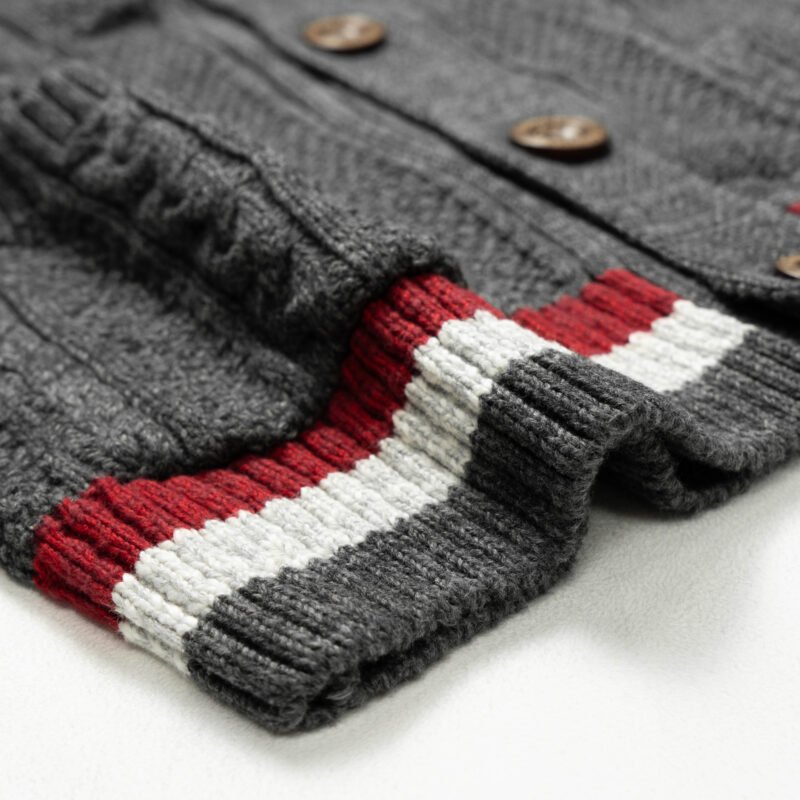
Synthetic Fibers
Synthetic fibers, such as acrylic and polyester, are widely used for their durability and affordability.
- Acrylic: Mimics wool’s appearance, lightweight, and easy to maintain.
- Polyester: Strong, wrinkle-resistant, often blended with other fibers.
Advantages:
- Cost-effective production.
- Low maintenance, resistant to moths and mildew.
- Durable and long-lasting.
Disadvantages:
- Limited breathability, potentially causing discomfort.
- Less luxurious feel compared to natural fibers.
- Prone to pilling or static electricity.
Blended Fabrics
Blending fibers combines the strengths of different materials, with common blends including wool-acrylic, cotton-polyester, and wool-cashmere.
Advantages:
- Balanced performance, such as warmth and durability.
- More affordable than pure natural fibers.
- Enhanced properties through strategic combinations.
Disadvantages:
- May lack the premium texture of pure natural fibers.
- Complex care requirements due to mixed fiber properties.
-800x800.jpg)
| Fabric Type | Main Advantages | Main Disadvantages |
|---|---|---|
| Wool | Warm, durable, natural | Itchy, requires careful care |
| Cashmere | Luxurious, soft, warm | Expensive, delicate |
| Cotton | Comfortable, breathable, easy care | Less warm, may shrink |
| Synthetic Fibers | Affordable, durable | Poor breathability, synthetic feel |
| Blends | Combined benefits, cost-effective | Lacks premium feel, complex care |
Ainear provides an extensive selection of fabrics to meet diverse client needs, ensuring each sweater achieves the desired quality and performance standards. As a prominent mens sweaters exporter, we are dedicated to offering versatile solutions for our clients.
Spotlight on Chinese Tie-Dye Technique
Chinese tie-dye, known as Zha Ran, is an ancient textile dyeing technique with a history exceeding 1,500 years. This craft creates unique patterns by tying fabric to resist dye, resulting in intricate designs that have been valued across centuries.
History and Origins
The origins of Chinese tie-dye date back to the Northern and Southern Dynasties (420-589 AD), with significant development during the Tang Dynasty (618-907 AD). Artisans crafted elaborate patterns on silk, a practice termed Jiao Xie, meaning “tying silk and dyeing.” Historical records, such as the Zizhi Tongjian Zhu from the Yuan Dynasty, describe tie-dye as twisting and tying fabric with threads, then dyeing it to produce multicolored effects (1500 Years of Tie Dye).
Despite a temporary ban during the Song Dynasty due to its association with extravagance, tie-dye persisted among minority groups, notably the Bai people in Yunnan province. Zhoucheng village in Dali is a hub for this craft, recognized as the “National Tie-Dye Hometown” by the Ministry of Culture (Yunnan Tie-dyeing Technique). Bai tie-dye features animal and plant motifs with vibrant eight-color lines, embodying cultural significance.
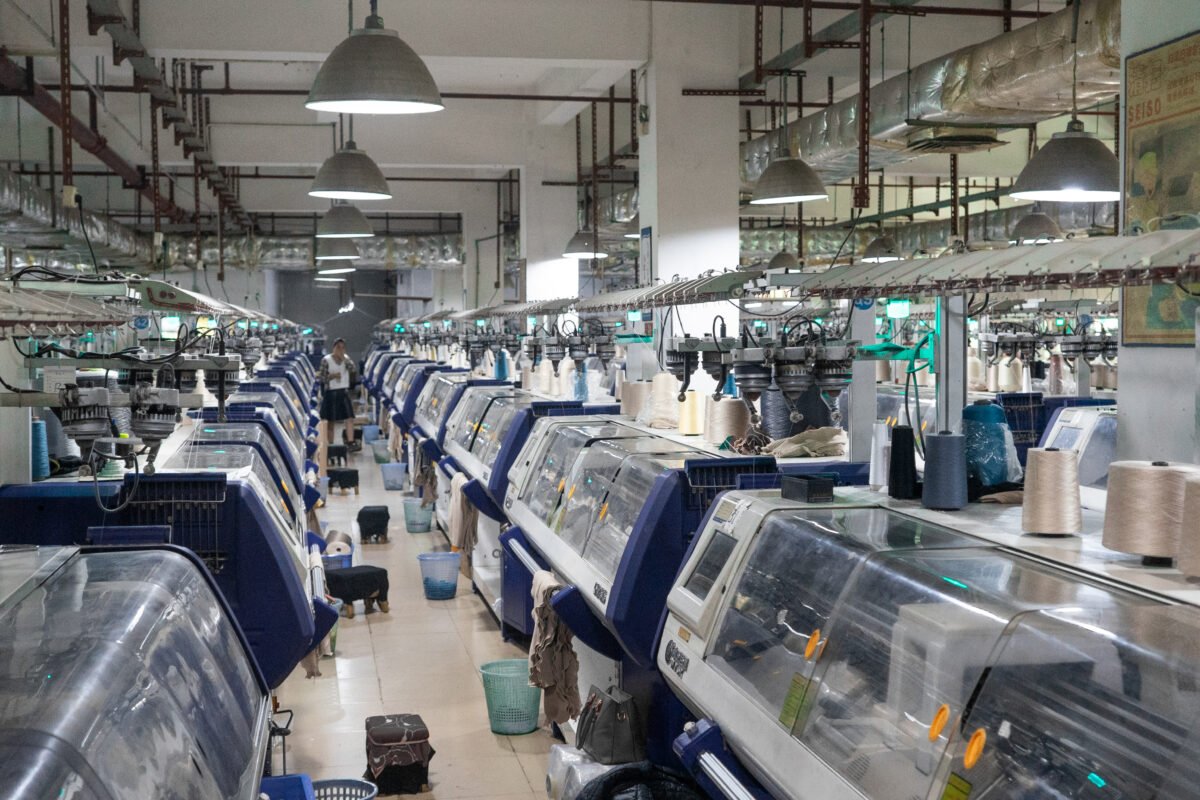
Industrial Application
In contemporary manufacturing, tie-dye has been adapted for industrial production while preserving its artistic essence. For mass customization, tie-dye is applied to sweaters through various methods:
- Garment Dyeing: Dyeing completed sweaters to create unique color patterns, a method utilized by brands like Benetton for knitwear.
- Batch Processing: Tying multiple garments uniformly to produce consistent patterns across a production run, enhancing efficiency for bulk orders.
- Digital Simulation: Employing digital printing to replicate tie-dye patterns, offering precise control and consistency, increasingly adopted in fashion (Tie-dye).
As a mens sweaters distributor, Ainear integrates traditional tie-dye techniques into its customization options, delivering products with artisanal aesthetics. Our processes balance efficiency and artistic value to meet B2B client demands.
Effects on Sweaters
Tie-dye imparts a distinctive aesthetic to sweaters, characterized by:
- Unique Patterns: Each sweater features a one-of-a-kind design, ensuring exclusivity.
- Color Gradients: Soft transitions between colors add depth and visual appeal.
- Artisanal Appeal: The handcrafted aesthetic resonates with consumers valuing individuality.
For B2B clients, tie-dyed sweaters differentiate product lines, appealing to customers seeking unique designs. These sweaters are ideal for seasonal or themed collections, such as pastel tones for spring or bold hues for summer.
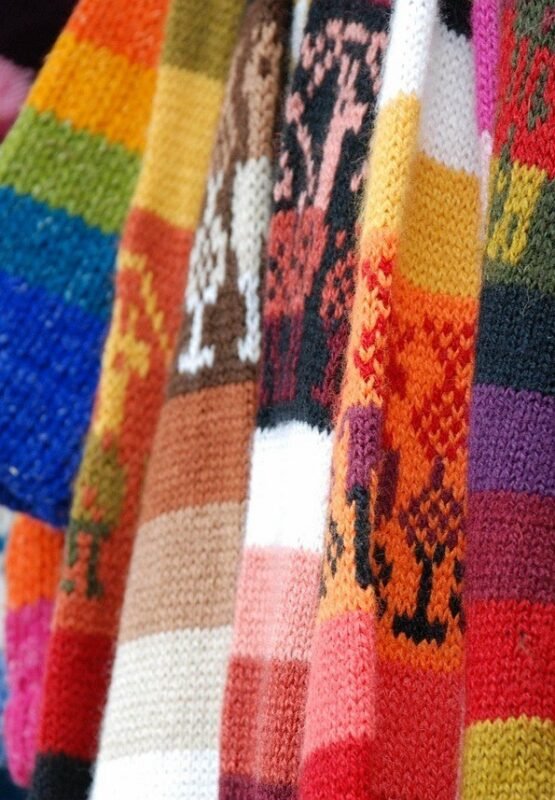
Advantages and Challenges
Advantages:
- Exclusivity: Unique designs enhance product distinctiveness.
- Visual Appeal: Vibrant patterns attract consumer attention.
- Cultural Value: Historical significance adds narrative depth to products.
Challenges:
- Consistency: Replicating identical patterns is difficult, potentially unsuitable for uniform branding.
- Scalability: Labor-intensive traditional methods may limit production speed.
- Cost: Manual processes can increase production expenses.
Despite these challenges, the demand for unique products often justifies the investment in tie-dye. Ainear optimizes production to balance cost and aesthetic value, ensuring high-quality outcomes.
Advantages and Challenges of Mass Customization Technologies and Fabrics
Understanding the advantages and challenges of technologies and fabrics is essential for informed decision-making in mass customization. The following tables summarize key considerations.
Technologies
| Technology | Advantages | Challenges |
|---|---|---|
| Computer-Controlled Knitting Machines | High precision, complex patterns, suitable for small to medium batches | High initial setup cost, requires skilled operators |
| Digital Printing | Design flexibility, no need for screens, eco-friendly | Less dye penetration, potential fading |
| Dyeing Techniques (including Tie-Dye) | Creative color applications, unique aesthetics | Time-consuming, requires quality control |
| 3D Knitting | Seamless garments, reduced waste, high customization | High equipment cost, design limitations |
| Automated Cutting and Sewing | Increased speed, consistency | Limited flexibility for complex designs |
| Supply Chain Management Software | Streamlined order processing, improved communication | Complex implementation, training required |
Fabrics
| Fabric | Advantages | Challenges |
|---|---|---|
| Wool | Warm, durable, natural | Itchy, requires careful care |
| Cashmere | Luxurious, soft, warm | Expensive, delicate |
| Cotton | Comfortable, breathable, easy care | Less warm, may shrink |
| Synthetic Fibers | Affordable, durable | Poor breathability, synthetic feel |
| Blends | Combined benefits, cost-effective | Lacks premium feel, complex care |
These considerations enable clients to select technologies and fabrics that align with their objectives. Ainear’s expert team provides guidance to optimize choices for brand and market goals.
Why Choose Ainear for Customized Men’s Sweaters
As a leading mens sweaters dealer, Ainear offers unparalleled customization options for B2B clients. With over 300 in-house developed sweater styles and support for diverse fabrics and designs, we cater to a wide range of client needs.
Our commitment to quality and innovation ensures that every sweater meets rigorous standards. Whether clients seek classic wool sweaters, luxurious cashmere pieces, or distinctive tie-dye designs, Ainear possesses the expertise and technology to realize their vision. Our mens sweaters OEM/ODM services provide flexible private label solutions, enhancing market competitiveness.
Explore our product range on our product page. For inquiries or to discuss customization needs, please contact us. Learn more about our company and values on our about page.
Conclusion
Mass customization of men’s sweaters empowers B2B clients to offer unique, high-quality products tailored to specific market demands. By leveraging advanced technologies and a comprehensive understanding of fabrics, companies like Ainear deliver exceptional customized sweaters that excel in competitive markets.
Technologies such as computer-controlled knitting machines and traditional tie-dye techniques provide flexibility and creativity in design. Coupled with diverse fabric options, each with distinct advantages and challenges, clients can make informed decisions aligned with their brand and customer preferences.
As you plan your next order of men’s sweaters, consider the benefits of mass customization and how Ainear can support your business goals with our expertise and commitment to excellence. As a trusted mens sweaters bulk supplier, we look forward to collaborating with you to create distinctive sweater collections.

